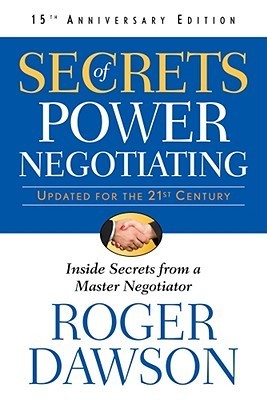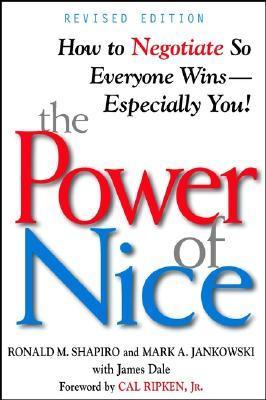
Secrets of Power Negotiating: Inside Secrets from a Master Negotiator
Book Description
Unlock the vault of influence and command the room with every word. In "Secrets of Power Negotiating," Roger Dawson reveals the clandestine techniques that turn ordinary conversations into powerful negotiations. With masterful stories and cutting-edge strategies, he dissects the art of persuasion and the psychology behind every deal. Discover how to read your opponents, maneuver through high-stakes discussions, and emerge victorious, all while maintaining your integrity. Will you seize control of your negotiations, or will you be left behind in a world where only the bold thrive? The secrets await—are you ready to negotiate your way to success?
Quick Book Summary
"Secrets of Power Negotiating" by Roger Dawson is a practical guidebook that equips readers with essential negotiation skills for both business and everyday life. Dawson distills decades of negotiating experience into actionable strategies for increasing influence, maximizing value, and achieving win-win outcomes. Through real-world examples and clear explanations, the book explores psychological tactics, effective communication, and the subtle art of maneuvering conversations to your advantage. Readers learn critical techniques including making first offers, handling objections, countering aggressive tactics, and closing deals with confidence. The emphasis is on creating opportunities rather than concessions, ensuring both sides leave satisfied. This essential resource empowers individuals to confidently tackle high-stakes discussions, protect their interests, and ultimately control the outcome of any negotiation, making it a staple for anyone who wants to succeed in business and beyond.
Summary of Key Ideas
Table of Contents
The Psychology Behind Negotiation Tactics
At the heart of successful negotiation lies a deep understanding of human psychology. Dawson reveals that much of negotiating is about perception—how you and your counterpart interpret offers, rejections, and concessions. He delves into the power of reciprocation, anchoring, and framing effects, demonstrating that the way information is presented is as important as the substance itself. Readers learn to recognize emotional triggers and employ empathy, allowing them to anticipate moves and influences, subtly guiding interactions toward their desired outcomes.
Mastering Verbal and Nonverbal Communication
Communication—both what is said and what remains unsaid—forms a cornerstone of Dawson’s approach. He emphasizes the impact of verbal techniques like open-ended questions, silent pauses, and intentional word choice. Nonverbal cues, such as posture, eye contact, and tone, also play pivotal roles. The book outlines methods to read opponents’ signals and adjust your own, fostering trust or creating strategic ambiguity as needed. Dawson stresses the importance of active listening and measured responses to maintain control and gather valuable information during discussions.
Handling Objections and Difficult Tactics
Negotiations rarely proceed without obstacles or aggressive tactics. Dawson equips readers with strategies to handle tough stances, manipulative ploys, and stonewalling. He advocates for calm, firm responses and the use of counter-tactics such as flinching, walking away, or using third-party authority. These methods help negotiators stand their ground without derailing discussions. The book cautions against emotional reactions and underscores the significance of remaining objective, turning challenges into opportunities for further concessions or creative solutions.
Achieving Win-Win Outcomes
A key principle underscored by Dawson is the pursuit of win-win solutions, ensuring deals are mutually beneficial. This approach fosters long-term relationships and repeat business. He introduces techniques for uncovering the other party’s real needs, creating additional value and options beyond the obvious. By focusing on interests instead of positions, negotiators can craft agreements that satisfy both sides’ key priorities, minimizing resentment and increasing the likelihood of follow-through on commitments.
Strategic Preparation and Timing
Preparation and timing are critical yet often overlooked elements of negotiation. Dawson emphasizes diligent research, clear objective setting, and understanding the other party’s constraints. Timing plays a crucial role in making offers, concession patterns, and closing the deal. Strategic pauses, deadlines, and knowing when to walk away provide leverage. Ultimately, Dawson empowers readers to approach negotiations fully equipped, maximizing their influence and boosting the probability of successful outcomes in both personal and professional settings.
Download This Summary
Get a free PDF of this summary instantly — no email required.





